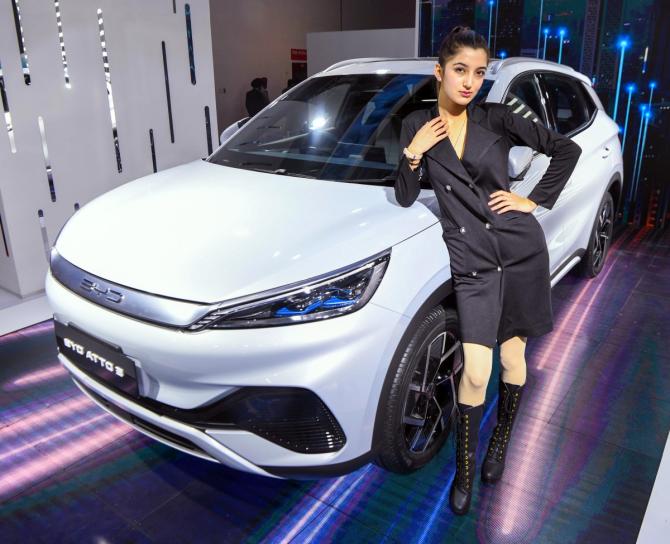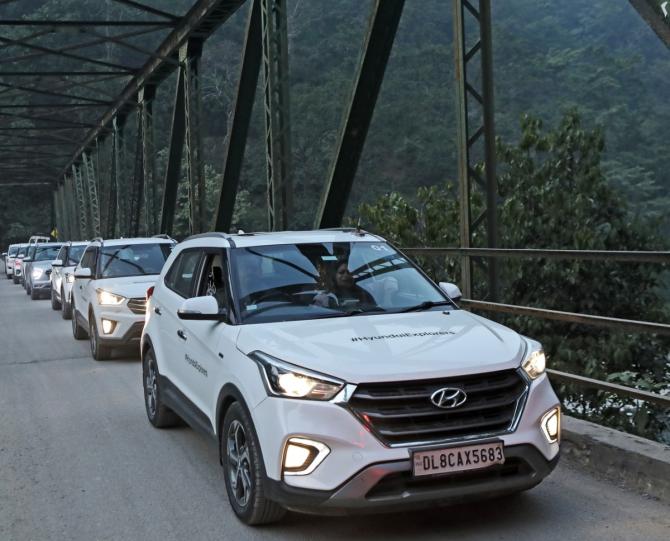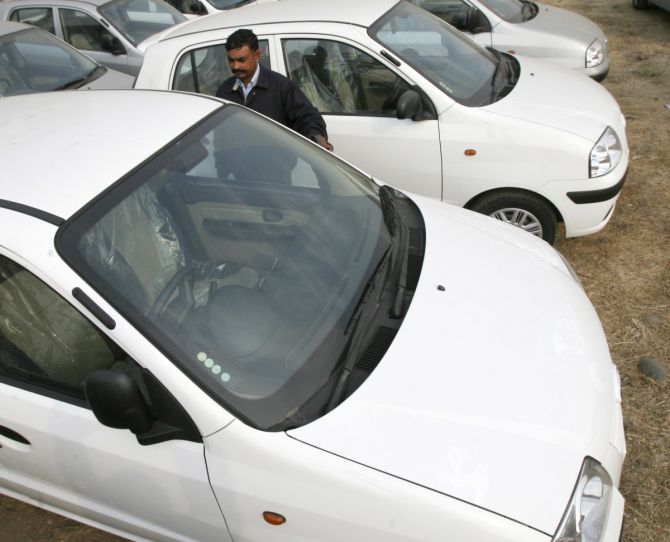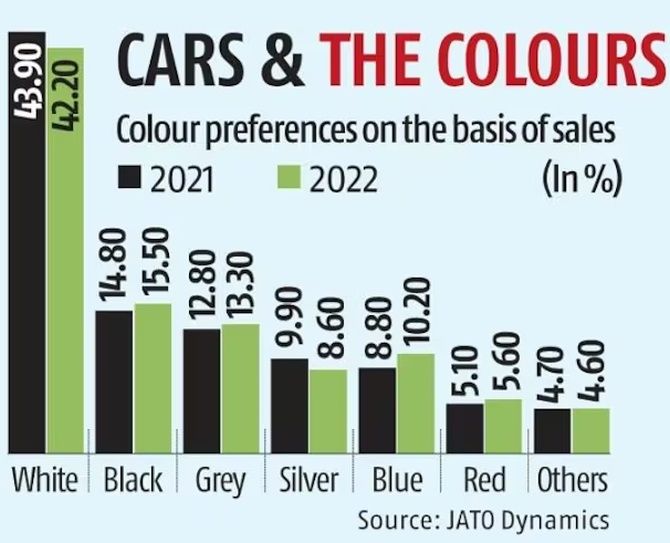White is easy to maintain, looks brighter than other colours over a longer period, is the least commonly rejected colour among family members, has high resale value, provides better safety at night, absorbs less heat in the summer season, makes small cars look bigger, and is not considered inauspicious.

What, one might ask, is the point of automotive majors offering a full palette of paint colours when the vast majority of car buyers simply choose white?
While white is a colour, how did the nation's colour selections get to be so bland?
While the sale of non-white coloured cars increased marginally in 2022, with car buyers becoming more experimental and aspirational, the country's love affair with white rides continued.
In fact, they constituted more than two-fifths of total passenger vehicle sales last year.
About 42.2 per cent of cars sold in India in 2022 were white.
This number was slightly higher in 2021, at 43.9 per cent, according to auto consultancy firm JATO Dynamics' data reviewed by Business Standard

Car sales in six other colours -- black, grey, blue, red, green, and gold -- rose by a few percentage points in 2022, compared with 2021.
The shorter waiting period for non-white coloured cars is propping up sales, said Shashank Srivastava, senior executive officer, marketing and sales, Maruti Suzuki India.
Additionally, the sport utility vehicle segment, which is experiencing the fastest growth among all segments, prefers darker colour models as they signify sophistication, luxury, and power, he added.
"In any growing economy and a maturing car market, this (preference for non-grayscale colours) has always been the trend. People start becoming more personalised in their colour choices. I think that may have started happening now in India. However, white is still the overwhelming top choice," Srivastava said.

White is easy to maintain, looks brighter than other colours over a longer period, is the least commonly rejected colour among family members, has high resale value, provides better safety at night, absorbs less heat in the summer season, makes small cars look bigger, and is not considered inauspicious.
"White, silver, and grey have always accounted for 65-70 per cent of total car sales in India for a long time. At one point, silver was very common. Internally, in this 65-70 per cent share, these three colours have kept switching places. If memory serves me right, in the past three decades, the car colour preferences have been overwhelmingly white, silver, and grey," Srivastava observed.
PVs saw their highest-ever sales in 2022 at 3.8 million units, about 430,000 units more than the previous peak of 2018.
Hyundai Motor Company said customers prefer cars in white for several factors, such as the ease of maintenance, affordability, less heat absorption than darker colours in summer, and less visibility of scuffs, scrapes, and dust.
The company added that among its customers, the preference for white jumped from 52 per cent in 2021 to 55 per cent in 2022.
Also, white's popularity can be attributed to it being one of the easiest colours to maintain. And because it is a common colour for fleet and rental vehicles, white is prevalent in the used car market as well.

Mohan Savarkar, vice-president (product line), Tata Motors Passenger Vehicles, said white cars have been doing well for the company.
"In 2022-23, the sales of white cars were at 36 per cent for Tata Motors. According to our research, the dominance of white as a car colour by customers is because it is an unbiased colour (equally preferred by all genders) and has higher resale value in the market," added Savarkar.
Srivastava said the choice of colour also depends on the type of vehicle.
"Take the example of Swift: People prefer red a lot more as the brand's positioning is individualistic and performance-driven. Performance is signified better with red or yellow. You will see sports cars that are either red or yellow. Non-white colours give an added dimension to the personality of the vehicle," he explained.
"The darker colours signify more sophistication, status, luxury, and power, and SUVs reflect the same. Also, SUVs are bigger than most cars, so people prefer darker shades. Lighter shades look better on small cars as they appear bigger than they are," noted Srivastava.
"Sometimes, the advertising that companies do for their brands also influences colour choices. In Maruti's case, the Nexa character colour is blue. In all our Nexa vehicles, blue seems to be the over-riding choice. Advertising impacts colour choices, not in the long run, but the effect is there for the period of the advertising campaign," Srivastava stated.
The availability of cars, in general, he added, has been much lower in the past few years, thereby dictating paint treatments.
"The waiting period is different for each colour. Since there is more demand for white, their waiting periods are longer. Car buyers choose other colours as those can be received faster."
Feature Presentation: Rajesh Alva/Rediff.com












 © 2025
© 2025